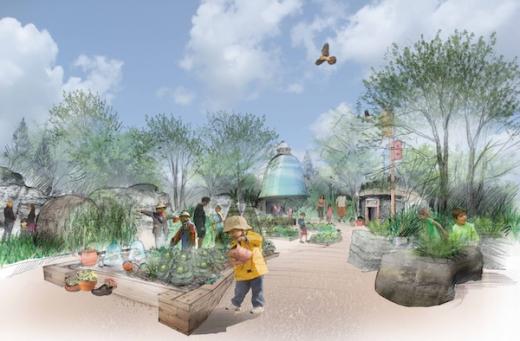Intended as both an educational tool and a “magical space” for kids, the new Children’s Garden at Penn State’s Arboretum is about to become a reality.
A project that has been in the arboretum’s master plan since 2002, construction on the children’s garden is anticipated to start this month, said Kim Steiner, director of the arboretum and professor of forest biology at Penn State’s College of Agricultural Sciences.
The $3.6 million garden, developed as an interactive site in which children can explore the natural world, aims to help children and adults understand their connections to nature and the environment, according to Penn State.
Kate Reeder, event and marketing coordinator for the arboretum, said the overall vision for the garden is to “create a delightful, interactive learning environment” for children of all ages and their families.
“The central theme is based on central Pennsylvania’s geomorphology and its particular flora, fauna and culture,” she said.
Components
Creation of the approximately 1-acre space, which has been made possible by private donors, will involve a lot of earthwork, stonework and manpower, Steiner said. Scheduled to be completed in a variety of phases, construction should be finished by the end of the year.
Reshaping the soil surface, paving and creating trails, and concrete work are just some of the projects and tasks involved in the construction.
“We’ll have some very significant stonework at the entrance,” Steiner said.
The garden will feature an impression of exposed bedrock at the ridge and valley area, Steiner said, as well as a tree stump made entirely out of concrete.
“(We have) artists who can make amazing things out of concrete,” he said.
Other features include a limestone grotto, a dual pool connected to a small waterfall, a glass house in the shape of a bell, and a fossil ridge, among others, Steiner said.
“(We’re) going to have a really interesting color canopy over the entrance,” he said of the “Childhood’s Gate” entry court, so visitors can experience a wide range of colors when the sun is out.
Another major component of the space, Reeder said, is the “Central Valley,” which will feature a Native American encampment, open spaces to explore, and the aforementioned bell-shaped glass house. Additionally, a “Mushroom Hollow” will reveal minerals and plant and animal life forms in secretive places from long ago times, she said.
“To understand the connection between the subterranean world and the surface habitat that it supports, visitors will meander through a valley prairie landscape, travel through caverns and a grotto, cultivate crops and plants, pass through a tree’s roots, and walk between anticline and syncline formations to discover the ecosystems that live within them,” Reeder said.
The impact and experience
“I personally believe that the biggest impact,” Steiner said, will be to “provide sort of a magical space for kids.”
Steiner said he hopes the new garden will make an impression on kids, and “make them interested in nature and environment for the rest of their lives.”
“(We’re) striving for something more,” he said. “An experience a little more profound.”
According to Penn State, the project is being led by principal designer Emmanuel Didier, of DidierDesignStudio in Fort Collins, Colo.
The leadership gifts for the garden total $4.1 million. Part of that will go toward the creation of an endowment to maintain the garden and to develop educational programs targeted for children ages 3 to 12, according to Penn State.
For more information visit arboretum.psu.edu.



